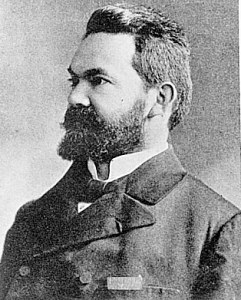Stephen I. Ternyik
Ancient Jewish Magic (1898, Strassburg)
A modern précis of the work of Ludwig Blau

(Jehuda Arje Blau, 1861-1936)
2021.03.08.
The original work (in German and Hungarian, with Hebrew and Greek key words) offers a detailed analysis, documentation and assessment of the ancient borderlines of superstition and Judaism, with respect to monotheist ethics. Prof. Rabbi Blau clearly states that Jewish and pagan magic have common cultural roots, are an inter-confessional and international phenomenon, although many Hebrew formulae (e.g. tetragrammaton, יהוה) are circulated as symbols.
His view of the good luck charm (amulet, קמיע) is relatively neutral and sees its Hebrew origin in the attributed healing power by the ancient physicians, who were also priests, i.e. benevolent apotropaic function. The overall drivers of every ancient magic practice are hate (malevolent) and love (benevolent), resulting always in death and adultery.
L. Blau locates the mentioned ancient magic practices in the Talmud and Midrash to the land Egypt, except some few Babylonian (Chaldean) customs. As in all times and among all peoples, performing certain magical practices was performed as business by women within Jewish communities and the legal warning of Exodus 22:18 (מְכַשֵּׁפָ֖ה, sorceress) is not gender-neutral; this also refers to comments of Baraitha Sanhedrin 67a. In the deeper sense of all these ancient human practices of gaining control over destiny and randomness, classical magic and symbolic art may have been the beginning of culture, in terms to 'create' by sensual media supernatural effects.
According to L. Blau, with respect to magic
practices, ancient human paganism has (had) a greater influence on Judaism
(than vice versa); the originality of Judaism is only grounded in the
creative awareness (realization, insight) of a single (united-only) creator.
